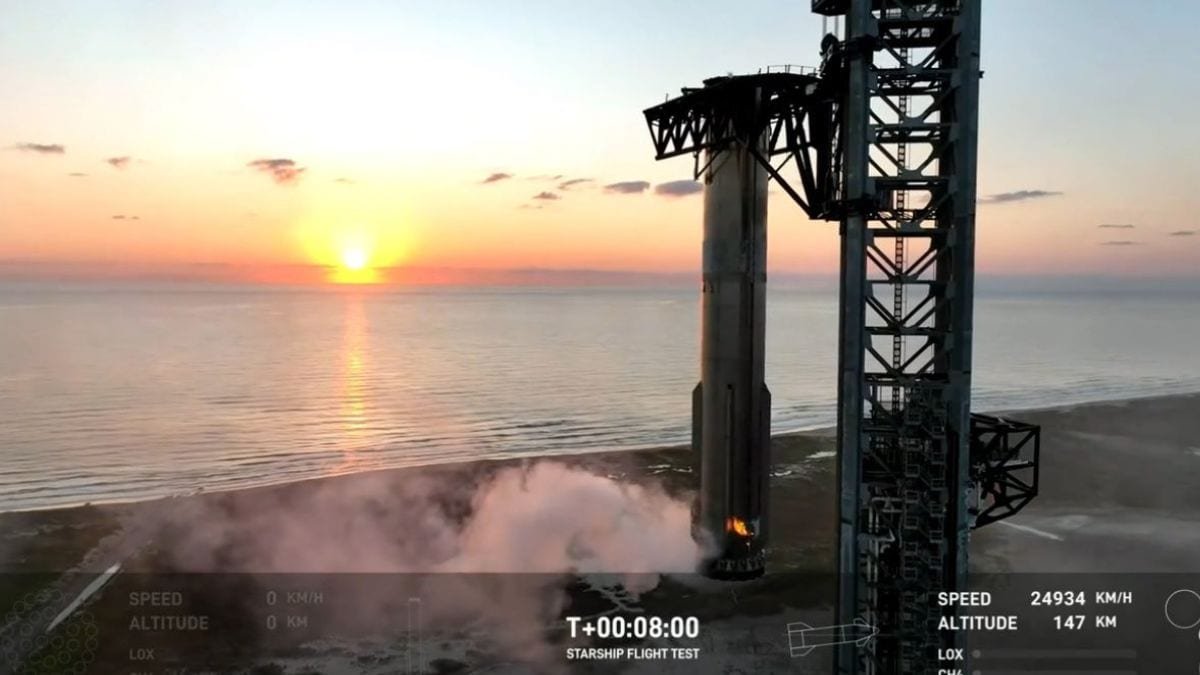SpaceX makes history starship launch test successful after super heavy landing

SpaceX Starship Launch: A Historic Leap Towards Mars
On Sunday, a monumental event unfolded in space exploration. Elon Musk’s SpaceX conducted the fifth test of the world’s most powerful and heavy rocket, the Starship. The test was a major success for SpaceX as the rocket’s booster returned safely to the launch site. This marks a crucial step toward making human missions to Mars a reality.
Details of the Historic Launch
Reports indicate that on Sunday, SpaceX launched the 400-foot-tall (122-meter) Starship vehicle. The launch took place around 6 PM IST from the Starbase launch site in South Texas, USA. The booster, known as Super Heavy, is the first stage of the Starship rocket, and SpaceX planned to recover it by landing it back on the launch mount. Remarkably, the mission went as planned.
Successful Booster Landing
After approximately 7 minutes in flight, the Super Heavy booster made a successful landing on the launch tower. A capture system on the tower secured the booster, marking a significant engineering achievement. SpaceX engineers, during the live commentary, called it a historic day for engineering, and the employees were heard cheering loudly in celebration. A SpaceX spokesperson even described the event as “magical.”
Additional Milestone Achieved
SpaceX’s success didn’t stop with the booster landing. The first stage booster also launched Starship, a 165-foot-tall upper stage, into the skies. According to the mission plan, Starship was expected to travel into space and then perform a splashdown in the Indian Ocean. True to the plan, 65 minutes after launch, the Starship fired its engines and descended smoothly over the ocean.
What is the Starship Rocket?
Starship is a fully reusable rocket system consisting of two main parts: the passenger section, designed to carry humans, and the Super Heavy rocket booster. Together, Starship and its booster stand 400 feet tall and weigh about 5 million kilograms. The rocket can produce a thrust of 16 million pounds (70 meganewtons), which is nearly double that of NASA’s Space Launch System (SLS) rocket.






